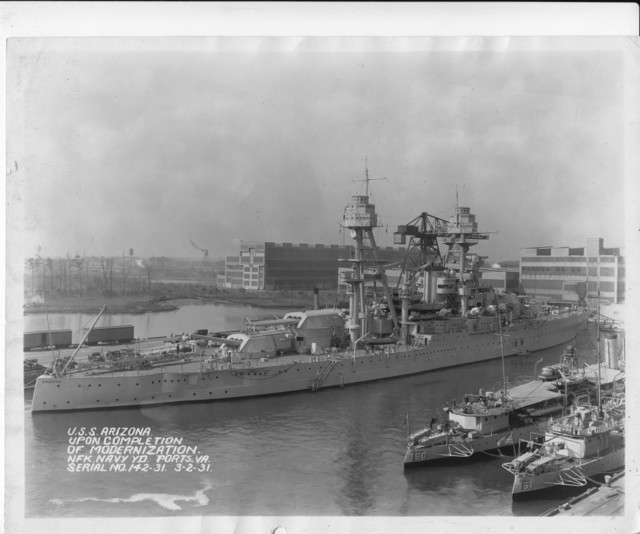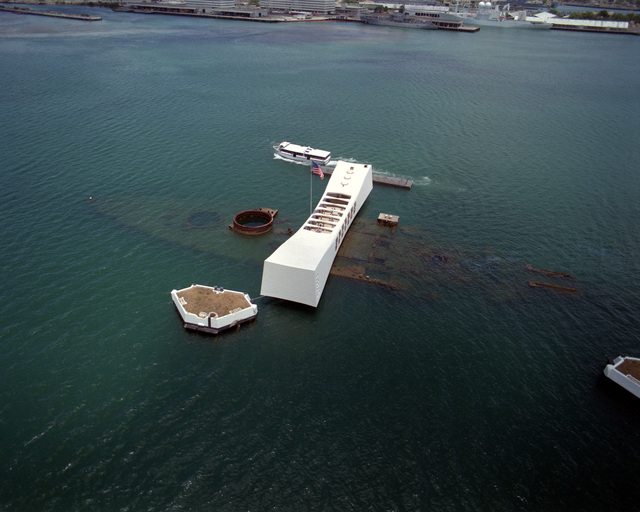
Japan’s History with the United States
The United States and Japan have had a complicated relationship, dating back to 1853, when Commodore Matthew Perry forced Japan to open up to trade. Having been previously isolated, Japan was unable to match the more technologically advanced Western Powers, and was forced into multiple unequal treaties. This led to a civil war, known as the Boshin War, ending in the new Meiji government taking power. This led to the Meiji Restoration, a political movement that led to the rapid modernization of Japan. The imperial court was moved to Edo, which was renamed to Tokyo. The government sent envoys worldwide, and recruited experts to help with modernization. Society underwent a drastic change. And in the late nineteenth century, the government began to push more militaristic policies.
As it did so, it began to pursue wars with various countries, including China (1894-95) and Russia (1904-05). With these victories, it began to expand onto the world stage. Several peace treaties were forged with the aims of both restricting Japanese expansion while simultaneously guaranteeing Japanese security. One of the major other players in these treaties was the United States, who feared Japanese expansionism. These fears became more realized over a decade as, in 1931, Japanese military extremists invaded and occupied Manchuria. A few years later, in 1937, Japan launched a full-scale invasion of China. The U.S. protested, as did several other nations. However, none of them were willing to commit to a military intervention.
Over the next three years, war broke out across Europe, and Japan joined Nazi Germany in becoming the Axis. As tensions continued to rise between the two nations, President Franklin D. Roosevelt ordered the US Pacific Fleet to move to Pearl Harbor, Hawaii. By this point, both countries had taken positions from which they could not back down without losing face. Although both countries continued to negotiate, the Japanese government had already decided to go to war. The attack was meant to cripple the Pacific Fleet so the U.S. could not get involved with the invasion of Asia. The Japanese Commander, Admiral Isoroku Tamamoto, Commander-in-Chief of the Japanese Combined Fleet, knew that the U.S. surpassed Japan in both economic and industrial might, and as such the U.S. would win in a prolonged conflict. As such, on November 26th, 1941, a Japanese attack fleet set sail from northern Japan.
The Day Of
By December 7th, the fleet reached its launching position, 230 nautical miles north of Oahu. Meanwhile, at Pearl Harbor, 185 ships from the U.S. Pacific Fleet floated calmly in the harbor. The USS Arizona had just returned to port the previous day. Seven of the eight battleships were tied up along Battleship Row on Ford Island. Before 7 am, a mobile radar station detected a large flight of planes approaching from the north. However, these planes were believed to be coming from the carrier USS Enterprise or an anticipated flight of B-17s. As such, nothing was done to defend or alert the harbor.
At 7:55 am, the first planes arrived, and began the attack. The total strike force consisted of 353 aircraft including 40 torpedo planes, 103 level bombers, 131 dive-bombers, and 79 fighters. It also had two heavy cruisers, 35 submarines, two light cruisers, nine oilers, two battleships, and 11 destroyers. At approximately 8:06 am, the USS Arizona was hit with an armor-piercing bomb, igniting its ammunition magazine, the blast of which reportedly lifted the Arizona out of the water. In less than nine minutes, The Arizona sank, killing 1,177 members of her crew. The Arizona sank in about 40 feet of water, and the parts above the surface continued to burn for two days after the attack. The entire attack took 1 hour and 15 minutes. It killed 2,403 U.S. personnel, including 68 civilians. As one survivor, Everest Capra, later stated, “It was of no surprise when the Japanese attacked Pearl Harbor on Dec. 7, 1941. Most of us had been expecting this, but did not have the actual date.”
The attack on Pearl Harbor marked a turning point in global history. It galvanized the United States, getting them to enter World War II, marking an end to America’s isolationist policies and the beginning of America’s involvement in the war.
Road to Construction
In 1949, after the war, the Territory of Hawaii created the Pacific War Memorial Commission. Its head, customs collector, H. Tucker Gratz, had been shocked that during the war, the Arizona was neglected and forgotten. In 1945, he visited the site of the attack on its anniversary to leave a wreath to commemorate the dead. When he went back to do the same a year later, he found the remains of his last wreath. In 1955, the Navy Club created the first long term memorial on Ford Island. However, they sought to create a memorial to truly commemorate the loss, and partnered with the Pacific War Memorial Commission to do so.
The monument did face one major obstacle, since there already was a federal agency tasked with creating monuments: the American Battle Monuments Commission (ABMC). Hawaii, at this point, was still just a territory and carried very little congressional weight. Despite this, when the bill went before the congress, the only significant opposition came from those who were also members of the ABMC.
Although the bill to create a memorial to commemorate the events that occurred at Pearl Harbor that day passed in 1958, it banned federal funding. An estimated $500,000 of funding was needed. Notable efforts to raise money included the “This Is Your Life” TV show and a 1961 concert by Elvis Presley in Bloch Arena in Pearl Harbor, that generated more than $64,000. Eventually, the 87th congress passed HR 44, and appropriated $150,000 towards the memorial. Alfred Preis was the architect chosen to design the monument. Preis was a German-American who was interned in Hawaii due to his ancestry. The structure was finished in 1962, and dedicated on Memorial Day of that year.

The Memorial
The memorial itself is 184 feet long, and is only accessible by boat. It rests directly above the USS Arizona. The middle of the memorial is designed to sag slightly, which can be seen as the initial defeat, with the memorial soaring skyward at the end to show victory. The memorial is white, which evokes a sense of peace and solemnity. The open air design also invites a sense of reverence. Visitors to the monument can observe the “Tears of the Arizona” which is actually oil from the ship itself slowly seeping through the hull and to the surface, something which creates an ongoing reminder of the tragedy. The names of the fallen are also inscribed on a marble wall in a shrine room at the far end of the memorial, which creates a way for visitors to remember those who died, and consider the consequences of war. Overall, the monument conveys a message of respect, mourning, and the enduring cost of freedom.
Public Reception
When the monument was opened in 1962, it was met with both widespread support and emotional resonance. Veterans, families of those who died, and the general public saw the monument as long overdue. However, there was also a solemn tone, as the monument was also a reminder of loss. Overall though, it also helped provide closure to those who lost loved ones in the attack, and provided a healing space. The decision to construct the monument two decades after the attack itself proved to reflect both the maturation of the public’s memory as well as growing recognition of the contributions that World War II veterans had made. It also came at an important time, as it was unveiled in the middle of the Cold War, helping to emphasize American heroism and unity during a time it was desperately needed.
Like all monuments, the USS Arizona is not without controversy and concerns. Some are concerned about the environmental impact of the ship’s fuel. About half a gallon of oil has leaked from the Arizona every day since it sank, with a federal report finding the type of oil leaking is particularly toxic. In addition, there is still an estimated half-million gallons of fuel in the hull, with the National Park Service estimating that, at its current rate, the Arizona could continue to leak oil for 500 more years. However, with the hull of the ship gradually collapsing, a catastrophic oil spill seems inevitable. In addition, there is the question about the Arizona as a war grave, specifically if it should be preserved as it is, or if repairs should be done in order to prevent environmental damage.
While not a controversy about the monument itself, the management of the monument has also faced scrutiny. One employee, John Landrysmith, within a year of being hired, found that hundreds of tickets that were supposed to be available to the public for free were being given to tour companies. These companies would then turn around and sell the tickets for as much as $89. Now, a team of employees handles ticketing decisions, and all employees are required to do ethics training.
Conclusion
The USS Arizona stands as a solemn and powerful tribute to all who lost their lives on December 7th, 1941. It commemorates an event that helped to shape both world affairs and history. Built through public will, government initiative, and private support, the memorial offers not just a reminder of the tragedy, but a message of resilience, sacrifice, and hope.
References
“An Overview of Japanese History.” Japan National Tourism Organization (JNTO), www.japan.travel/en/responsible-travel-guide/features/overview-japanese-history/. Accessed 7 May 2025.
“USS Arizona.” Encyclopædia Britannica, Encyclopædia Britannica, inc., www.britannica.com/topic/USS-Arizona#ref1246412. Accessed 7 May 2025.
Mr. Burlingame is a feature writer for the Honolulu Star Bulletin. “The USS Arizona Memorial.” U.S. Naval Institute, 7 July 2023, www.usni.org/magazines/naval-history-magazine/1991/december/uss-arizona-memorial.
“Stories.” National Parks Service, U.S. Department of the Interior, 25 Sept. 2024, www.nps.gov/perl/learn/historyculture/stories.htm.
A Pearl Harbor Fact Sheet, www.nationalww2museum.org/sites/default/files/2017-07/pearl-harbor.pdf. Accessed 7 May 2025.
“O’ahu as Battlefield.” Park Archives: Pearl Harbor National Memorial, npshistory.com/publications/perl/index.htm. Accessed 7 May 2025.
“H.R.44 – An Act to Authorize the Appropriation of $150,000 for Use toward the Construction of a U.S.S. Arizona Memorial.” Congress.Gov, www.congress.gov/bill/87th-congress/house-bill/44/text. Accessed 7 May 2025.
“How Was the USS Arizona Memorial Paid For?” PearlHarbor.Org, 21 Mar. 2023, pearlharbor.org/blog/how-was-the-uss-arizona-memorial-paid-for/.
Daysog, Rick. “Whisteblower in USS Arizona Memorial Ticket Scandal Says He Was Retaliated Against.” Https://Www.Hawaiinewsnow.Com, 30 May 2017, www.hawaiinewsnow.com/story/35542648/whisteblower-in-uss-arizona-memorial-ticket-scandal-says-he-was-retaliated-against/.
Caulfield, Claire. “Oil Constantly Leaks from the USS Arizona. Is That an Environmental Problem?” Honolulu Civil Beat, 5 Feb. 2022, www.civilbeat.org/2020/02/oil-constantly-leaks-from-the-uss-arizona-is-that-an-environmental-problem/.
Mr. Russell has worked as an underwater archeologist with the National Park Service Submerged Resources Center. “Preserving the ‘Ultimate Shrine.’” U.S. Naval Institute, 14 Oct. 2022, www.usni.org/magazines/naval-history-magazine/2004/february/preserving-ultimate-shrine#:~:text=The%20National%20Park%20Service%20also,the%20oil%27s%20release%20is%20inevitable.
PICRYL – Public Domain Media Search Engine. “An Aerial View of the USS Arizona Memorial Off the Northeast End of Ford Island. the Actual Battleship, Sunk during the Japanese Attack on Pearl Harbor on December 7, 1941, Is Visible Directly beneath the Memorial Due to the Low Tide and Calm Water – Picryl – Public Domain Media Search Engine Public Domain Search.” PICRYL – Public Domain Media Search Engine, 1 June 1991, timelessmoon.getarchive.net/media/an-aerial-view-of-the-uss-arizona-memorial-off-the-northeast-end-of-ford-island-9b7105.
NARA & DVIDS Public Domain Archive. “USS Arizona, upon Completion of Modernization, Norfolk Navy Yard Ports, Virginia Serial No. 142-31 – Nara & DVIDS Public Domain Archive Public Domain Search.” NARA & DVIDS Public Domain Archive, 2 Mar. 1931, nara.getarchive.net/media/uss-arizona-upon-completion-of-modernization-norfolk-navy-yard-ports-virginia-a3fd9c.
